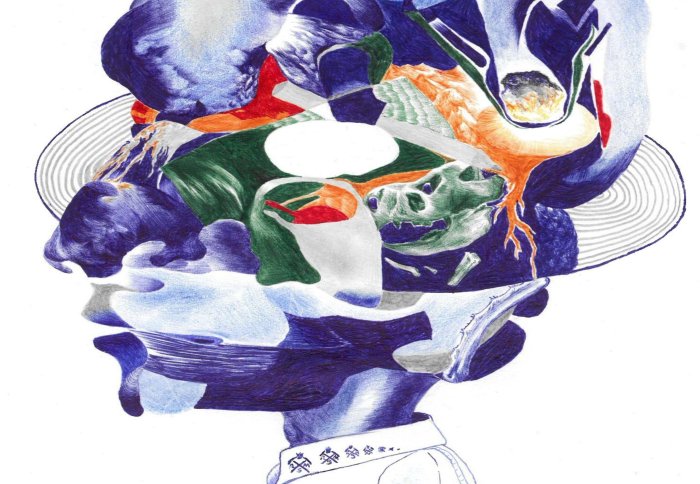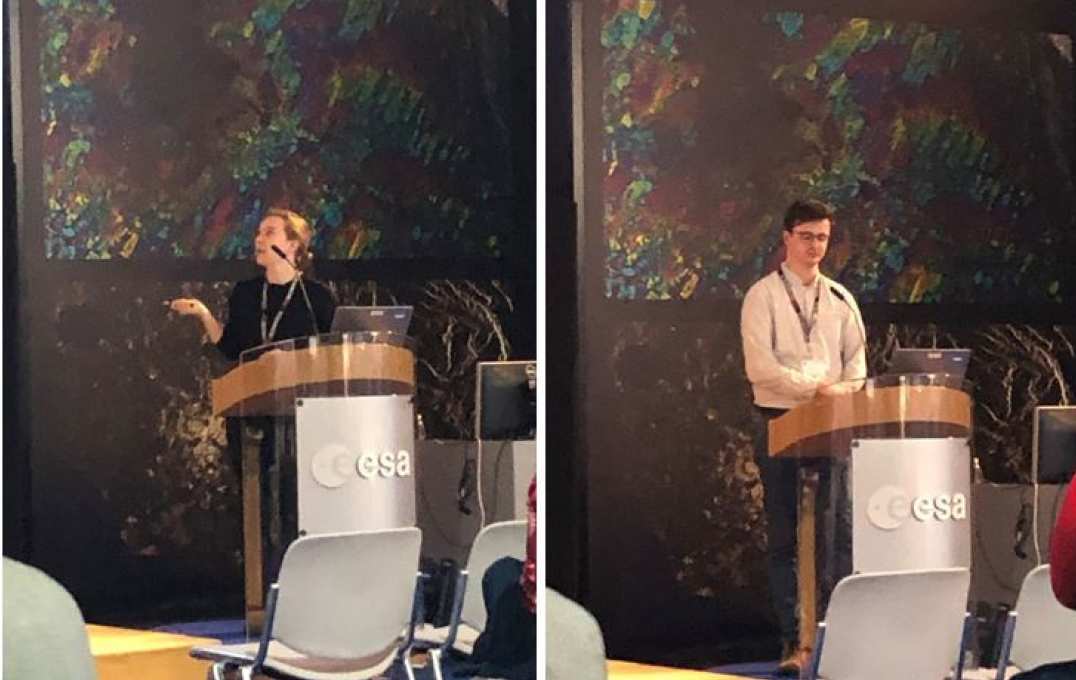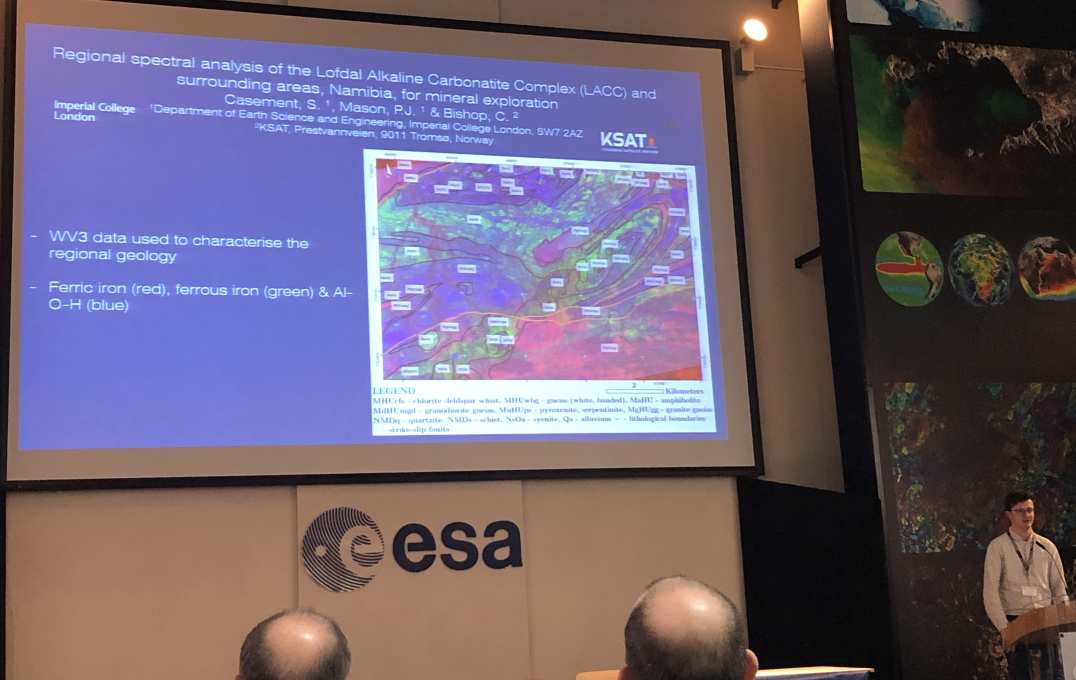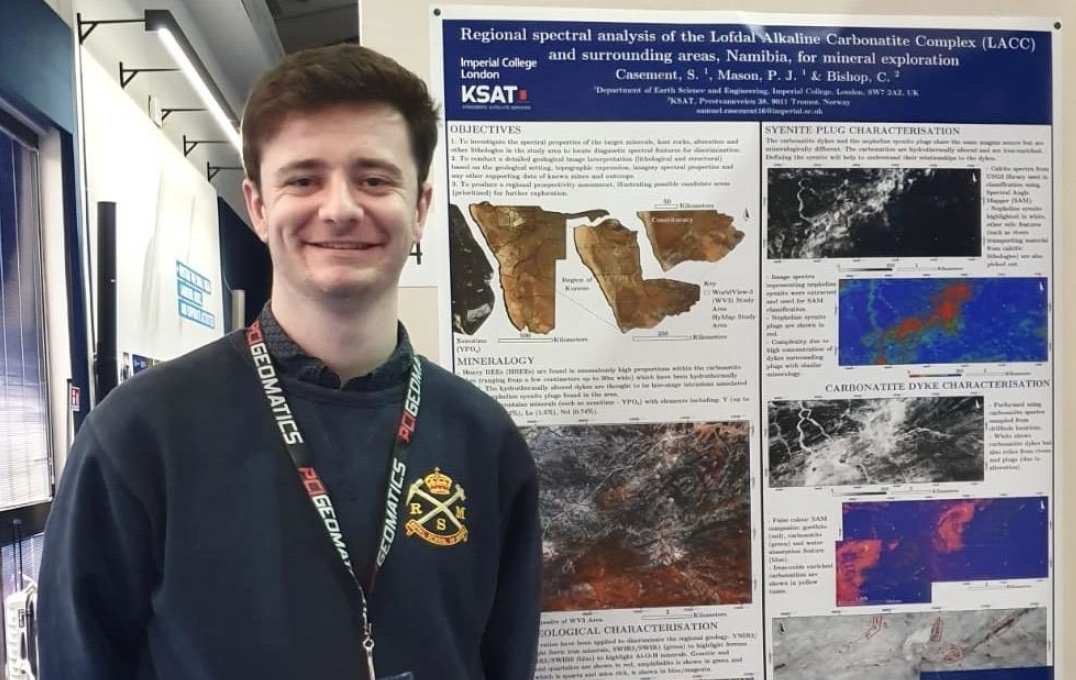ESE January Newsletter

Recent publications, talks and updates in the Department of Earth Science and Engineering
Outline
Publications
Conference Talks and Webinar
Awards
Impact and Media
ESE Art Works
PhD Vivas
New Staff
Publications
Scoular, J. M., Croft, J., Ghail, R. C., Mason, P. J., Lawrence J. A. & Stoianov, I., 2019. Limitations of Persistent Scatterer Interferometry to measure small seasonal ground movements in an urban environment, Quarterly Journal of Engineering Geology & Hydrology.
Wang P., Reyes, F., Cilliers, J.J. & Brito-Parada, P. R. (2020). Evaluation of collector performance at the bubble-particle scale. Minerals Engineering.
Conference Talks and Webinar
Pablo Brito-Parada delivered a webinar for the Institution of Chemical Engineers (IChemE), organised by IChemE's Mining and Minerals Special Interest Group. His talk was entitled "Understanding froth flotation across scales".
Rob Lowther gave an invited talk at the Geological Curators’ Group winter conference at the Sedgwick Museum of Earth Science, Oxford on 10 December 2019. The theme of the conference was “How can we make our precious collections available to researchers?”. Rob’s talk which was very well received was titled “University Geological Collections – The insight, challenges and surprises they hold”. In his talk, Rob explored the pressures and restraints that university collections face in the current academic climate while sharing some of the pleasant surprises these collections can throw up. It showcased the benefits of the right samples being introduced to the right researchers and various attendees will be visiting our departmental collections in the coming months to investigate materials to assist them with their own research.
Robert Zimmerman gave an invited talk at the December 2019 Fall Annual AGU meeting in San Francisco, entitled “Modeling of coupled thermo-hydro-mechanical-chemical processes in fractured porous media”. His co-authors were Adriana Paluszny, Saeed Salimzadeh, Philipp Lang, and Robin Thomas.
Robin Thomas gave two talks at the AGU meeting, “Modeling of the interaction of a hydraulic fracture with a pre-existing three-dimensional fracture network using a fully-coupled finite element-based poroelastic model”, and “Influence of fracture interaction and coalescence on flow channelling in dense three-dimensional fracture networks”, both with co-authors Adriana Paluszny and Robert Zimmerman.
Victoria Fernandes gave an invited talk during the AGU Fall Meeting which held on 9 -13 December 2019 at San Francisco. There were also other talks from the Surface Processes Group:
- V. M. Fernandes, G. G. Roberts, N. White and A. C. Whittaker (2019), A Multi-proxy Approach to Understanding Continental-Scale Landscape Evolution: A North American Example
- V. M. Fernandes and G. G. Roberts (2019), Global Patterns of Continental Uplift: Insights Inferred from Paleobiological Data"
- G. G. Roberts, V. M. Fernandes and M. Morris (2019), Patterns of Cenozoic Dynamic Topography: An Example from the North American Middle Atlantic Margin
- C. Pont, A. C. Whittaker, G. G. Roberts and V. M. Fernandes (2019) Quantifying landscape response times to active faulting and bedrock erodibility: Field insights from Calabria, Italy
Two ESE MSci students, Bethany Grant and Sam Casement, presented their work at Geological Remote Sensing Group’s 30th Annual International Conference on 10 - 13 December 2019. The conference held at ESA ESRIN in Frascati, Italy. Jennifer Scoular (RSM alumnus, now PhD student in the Civil Engineering department) also presented her latest research. They were all proud ambassadors of Imperial College London as they impressed the other delegates (academic and industrial) from all over the world, during work and social events.
Awards
Jay Bullen has been awarded a Researcher Mobility Grant of £2500 by the Royal Society of Chemistry to develop an opensource, Arduino based electrochemical system for measuring toxic arsenic in drinking water. In collaboration with the charity Caminos de Agua based in Guanajuato, Mexico, this project aims to provide cheap and accurate determination of arsenic contamination on a system costing 100 USD.
Impact and Media
Dr Melissa Gray, awarded her PhD in November last year, recorded a short interview about her research on slow-slip earthquakes with Victoria Murphy. Listen to the interview about the Hikurangi subduction zone, and her experience as a PhD student.
ESE Art Works
Grace (Yige) Zhang has been involved in artworks related to Earth Sciences. See below some of her works and the motivation behind them: Name: Planet Bust – what does the Earth think about in its lifetime?
Name: Planet Bust – what does the Earth think about in its lifetime?
Time: October 2019
Materials used: ball-point pen, pencil
Description
If a bust is big and dense enough for any properties of a planet, what will it look like? An anonymous person’s bust is facing left, and it rotates to form an accretion disk, which shows interference patterns when seen from outer space.
On the upper left, there is a heart representing the pulse of the earth, which has cyclical changes throughout its lifetime.
Even the blood vessels of the heart should wear safety helmet and hiking boots and bring hand lens if they want to go on a field trip. Safety worth more than any rock sample.
Grace used the shape of an instructor’s hand in the field trip as the hood of the bust, which is where the major idea came from.
On the right, a meteorite is falling from the night sky, drifting along the person’s ear, smashing a hilly surface.
Large volumes of sedimentary rocks are melted by the meteorite and flow into cracks. Dinosaurs are killed and buried in sedimentary facies shown in blue.
On the person’s mouth, materials in the atmosphere start to differentiate due to different densities, and sedimentary rocks are formed.
The person is wearing a shirt with RSM logo.
 Name: Planet
Name: Planet
Time: August 2017
Materials used: ball-point pen, water-colour, marker pen, sketch paper.
Description
This blue planet grows from the inside.
At the early stage of development of life on Earth, we had many vesicles that could exchange matter with the outside world and grow, floating in the Archaean water bodies.
About 2Ma later, eukaryotes emerged, cells assemble to form amazingly complicated creatures with different shapes, forms and characteristics. These creatures naturally evolved to become friends and enemies.
While Jurassic dinosaurs have their bones on a cliff, and horseshoe crabs are still crawling on the beach, humans have developed the virtual electronic world.
In the future,apes, are fishing and shipping, however with our natural instinct of invading other ships from another civilization.
PhD Vivas
Tatiana Kalinicheva passed her PhD viva on 19 December 2019. Congratulations Dr Tatiana Kalinicheva.
New Staff
Claire Dilliway – Started on 2 December as a Project Manager working with Professor Chris Pain
Dr Zhencong Zhao – Started on 9 December as a Research Associate with Professor Yanghua Wang
Conor O’Malley – started on 4 January as a Research Assistant with Dr Gareth Roberts
Article text (excluding photos or graphics) © Imperial College London.
Photos and graphics subject to third party copyright used with permission or © Imperial College London.
Reporter
Jemimah-Sandra Samuel
Department of Earth Science & Engineering



